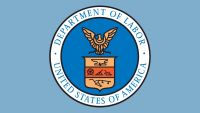Update On Proposed Rule On Hexavalent Chromium
While OSHA appears to be on track to finalize its standard on occupational exposures to hexavalent chromium by January 18, 2006, there remains a great deal of concern about the proposed PEL (permissible exposure limit). The level proposed is so low (1 microgram per cubic meter) that many businesses have made it clear to OSHA that they will probably close their doors rather than spend money to upgrade their facilities only to find out that the new technologies don't help them achieve the PEL. The proposed level is 50 times more stringent than the current standard and 50 times more stringent than the exposure limits of our major trading partners in Europe and Asia.
In an effort to bring these concerns to the forefront before the rule is finalized, Congressman John Boehner, Chairman of the House Ed and Workforce Committee and Congressman Charlie Norwood, Chairman of the Workforce Protections Subcommittee, sent a letter to Josh Bolton, head of the Office of Management and Budget asking that the agency thoroughly examine all the scientific evidence presented on the standard. Apparently recent analyses submitted to OSHA during the comment period suggest that the agency failed to include whole industry sectors with many small businesses in its assessment of the proposed rule.
A letter (spearheaded by Senator Kit Bond (R-MO)) and being circulated for signatures of other Senators will also be sent to Labor Secretary Chao asking her to insure that OSHA fully assesses the technological feasibility of the proposed limit and the potential adverse consequences of the rule on American jobs and competitiveness.
By some estimates, the cost to the U.S. economy for a PEL this low will easily exceed $3 billion annually - far greater than OSHA's estimated cost of $220 million and could make this rule one of the most expensive federal regulations in years.
This is an important issue for our industry because of the potential precedent the rule could set for silica.
About the Author
Marian J. Marshall was the Director of Government Affairs for the Mason Contractors Association of America.


















